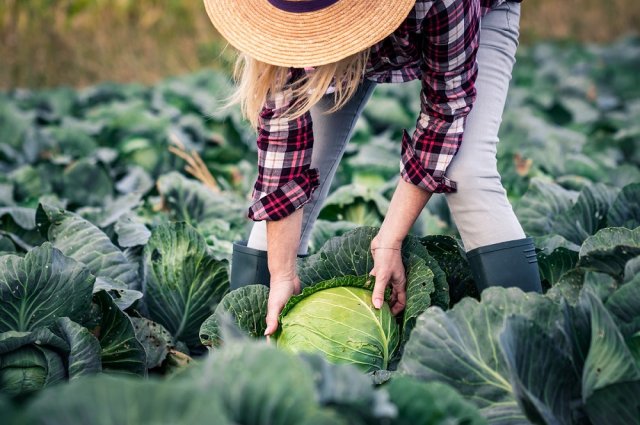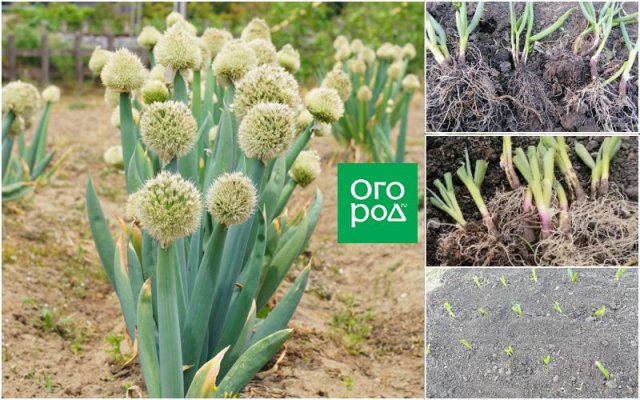Tasty and healthy cauliflower enjoys well-deserved popularity all over the world – in terms of cultivation volume, it ranks second after white cabbage. And this variety is called cauliflower not at all for its color (although its heads can be white, yellow, red, and purple).
The thing is that its “head” around a thick, branched stem looks as if it really is a tightly packed group of numerous flowers-inflorescences.
Cauliflower varieties differ in leaf shape, size, density and color of the head, duration of the growing season; and it itself, in comparison with the cabbage variety, is distinguished by its early maturity and extended period of yield (up to 35 days compared to 10-15 for white cabbage). Basically, sowing and caring for cauliflower differs little from that for the cabbage varieties, although it is more capricious and sensitive to changes in environmental conditions (this especially concerns the temperature and humidity of the soil and air and the composition of the soil).
How and When to Harvest Cauliflower
It is precisely because cauliflower is very afraid of negative temperatures that it must be removed from the garden bed before frost sets in. Why do we mention this in the topic about storing vegetables? It is precisely because competent agricultural technology of cultivation coupled with timely harvesting of cabbage will allow you to get strong healthy heads and extend its shelf life. The shelf life of the heads can be affected by many reasons – from the plant variety, soil composition and the amount of fertilizers applied to the weather in the season.
Early varieties of cauliflower, which ripen 60-100 days after emergence, begin to be cut in mid-June, medium ones (“ready” in 100-130 days) – in July-August, late ones (they need at least 150 days) – from the end of August to mid-September (night temperatures should not fall below 0°C). It is the medium-late and late varieties and hybrids of cauliflower that are better suited for long-term winter storage.
The appearance of the plant will tell you the exact time of harvesting. You need to start the process before the head becomes loose and the flowers begin to bloom (the inflorescences begin to “fall apart”) – while the elastic and dense heads should already reach the size and weight determined by the variety (8-15 cm and 400-1000 g on average).
Cabbage heads should be harvested in dry weather, cutting them off together with 3-4 covering leaves 2 cm below the last leaf, and immediately put them in a semi-shaded, well-ventilated place.
How to Properly Store Cauliflower
The best way to store cauliflower for a long time is to freeze it in portions in plastic bags. In this form, the vegetable can be stored for up to 9 months without losing its quality and taste (but it is better, of course, not to keep it that long).
Before putting the cabbage in the freezer, the heads need to be washed, dried, damaged or dried parts removed, and the rest cut into small pieces or divided into florets and only then portioned into plastic bags. Many housewives advise blanching for a couple of minutes, then cooling and drying the florets – this way you can further extend the shelf life of the preparation. You can add a little salt to the water for taste, and lemon juice to prevent the florets from darkening.
If you want to eat cabbage fresh, it can be stored at room temperature for only a few days. If you are interested in a longer shelf life, you can try storing it in the refrigerator after harvesting – this way the vegetable will remain edible for a couple of weeks – or in the cellar/basement (this way you will extend the “life” of the heads to a couple of months).
In the refrigerator, keep the cauliflower heads on the bottom “vegetable shelf”, each wrapped individually in paper (in a paper bag) or cling film. Do not forget to remove the leaves at the base of the head before storing, otherwise they will quickly soften and begin to rot. Every few days, you need to take the head out and check it for darkening and softened areas – these must be cut off to healthy tissue before putting the cabbage back in the bag and in the refrigerator. Of course, if the paper gets wet, you also need to change it to dry.
By the way, you can also store cauliflower in the refrigerator in another way – in jars with brine, so it will remain suitable for use for several months. To do this, wash and separate the cabbage into florets, place it in glass jars and fill it with a saline solution, which is prepared in proportions of 50 g of salt per 1 liter of water. Before use, such cabbage will need to be taken out of the jar and simply rinsed from the brine.
If you have a cellar or basement without access to light (otherwise the cabbage will quickly darken and lose its taste), with a temperature close to 0°C, with good ventilation and humidity of 85-90%, you can send cauliflower for storage there. In such rooms, it is convenient to store the heads, laid in wooden or plastic boxes, lined and then covered with film, or in paper bags, in cardboard boxes, on plastic racks in one layer or even suspended with the stalks up. In any case, even if the heads are not packed separately, they should be stored so that they do not touch each other.
With this method of storage, it is again highly desirable to regularly check the cabbage for rot or disease, promptly removing spoiled specimens so that they do not infect the rest.
Just like in a cellar/basement, this vegetable can also be stored on a balcony – under the conditions described above.
In extreme cases, in the fall, you can even transplant the cauliflower from the garden bed into boxes or buckets with fertile soil for a while and “store” it in the cellar in a state of growing. The main thing in such a situation is to maintain the right conditions (temperature 5-10°C, humidity about 90%, good ventilation of the room, watering), otherwise the cabbage will either ripen much earlier than expected or quickly spoil/rot.
As you can see, there are several ways to store cauliflower both in an apartment and in a utility room – it all depends on your capabilities and needs.












